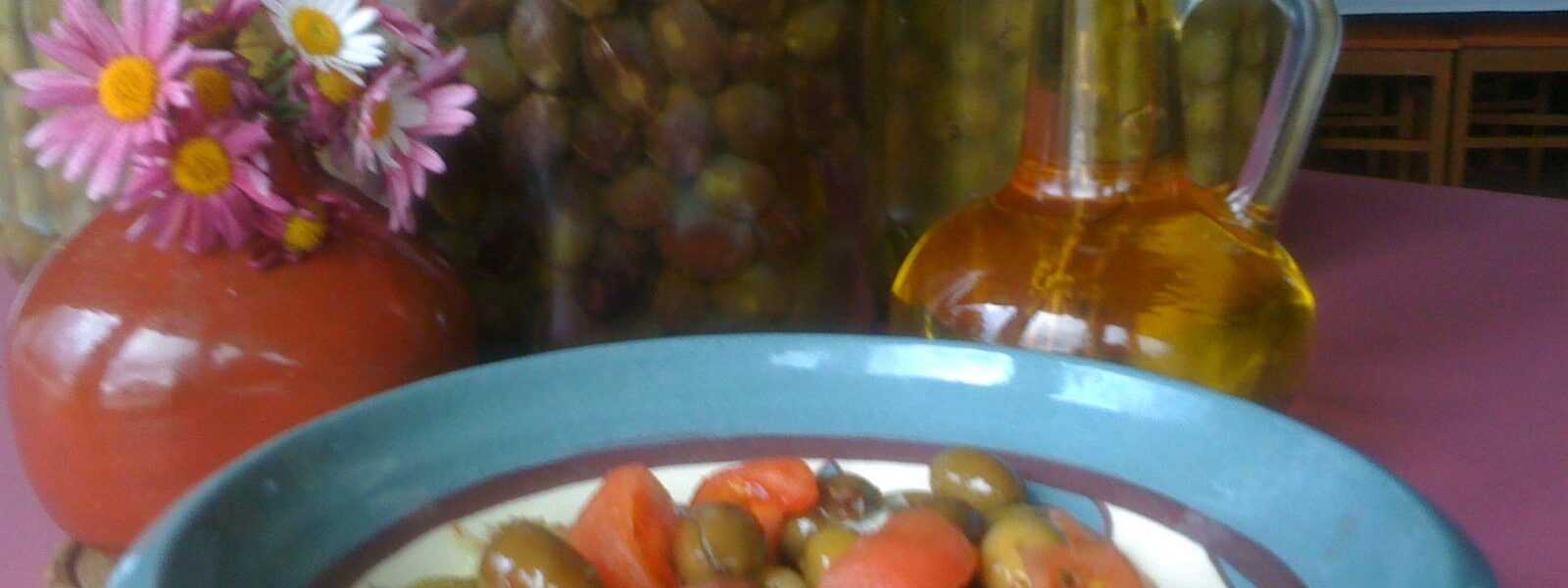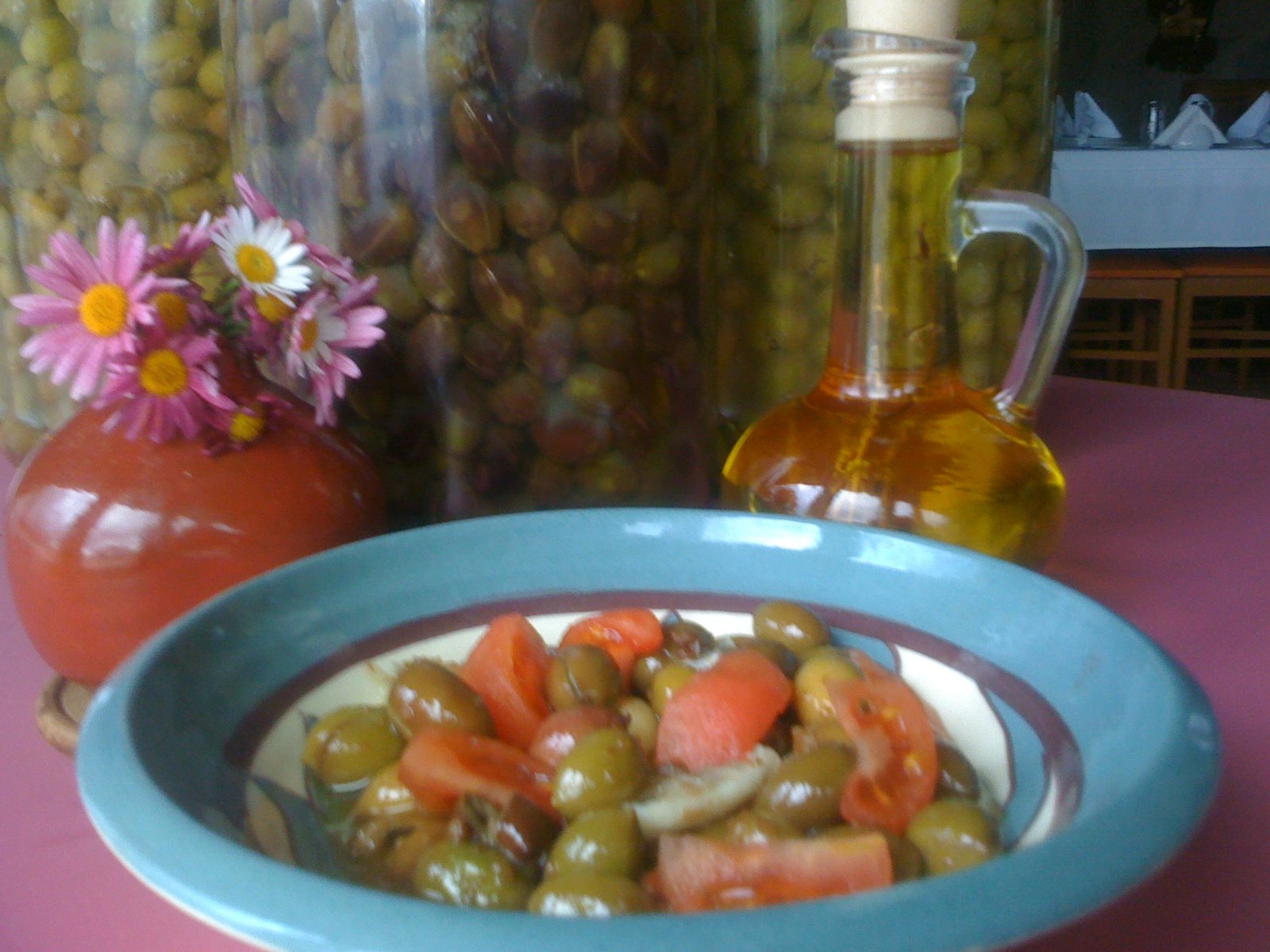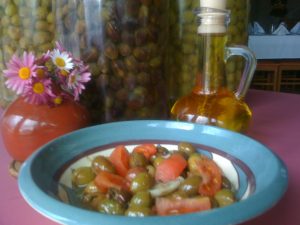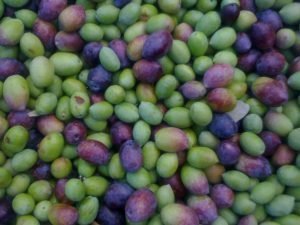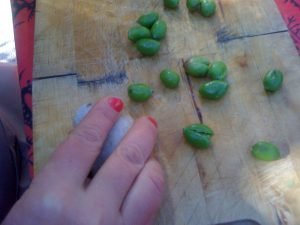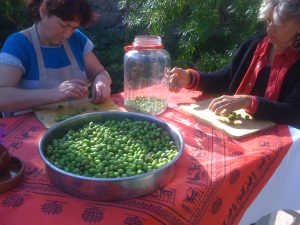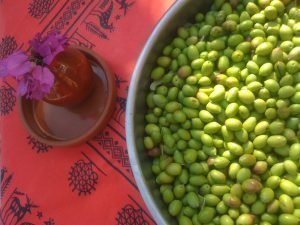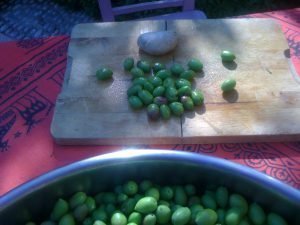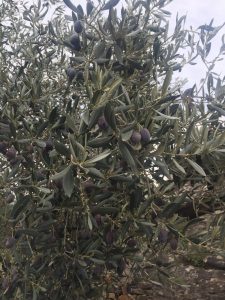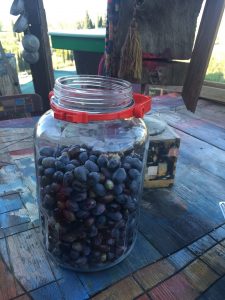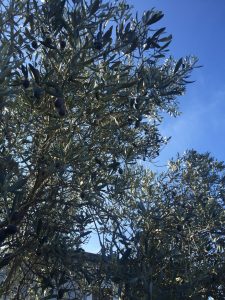Olive Harvesting Holidays are from November to January
- Olive Festival in Milas where there are food contests, olive markets, visit to olive oil factories etc, takes place every year at the end of November.
Turkey is an olive country, there many orchards along the long coastline starting from The Marmara Sea, all the way down to the Eastern Mediterranean
Olives always had an important role in our lives when I was groving up. It was one of the most liked items on our Turkish Breakfast menu. Where the other musts were feta cheese made from sheeps milk called “Ezine” and Cay (chai) Turkish Tea and ofcourse bread that was bought from our local bakery (fırın) still luke warm when it was brought to our table.
From time to time Turkish Bagels covered with sesame seeds (simit) would accompany our traditional daily breakfast. If it was a holiday, the breakfast in our house would take longer and would include home made jams, preserves, sun dried fruits, tomatos and cucumbers.
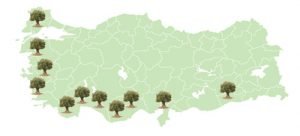 Coming back to olives, it was always important where they came from and how they were Treated. Every body in the family had different favorites, my father would always ask for “sele” which are black olives from the Marmara Region majorly from Gemlik close to Bursa, treated with salt in baskets and it takes almost a year until you can eat them. This kind of Olives would be brought from Gemlik, in the later years my father followed his love for olives and bought land near Gemlik and started making his own “sele zeytin”. “Zeytin” means olives in Turkish. They are totaly different than what you can call olives in the western world, very delicious and mature. My mother would go for her own fathers way, an emigrant from Northern Greece who was forced to leave his mother land after the first World War, the Greek and Turkish governments exchanged people’s lands and his family was given olive lands in Pergamon (Bergama). For many years he neglected this land maybe because he did not want to remember what had happened in those years which were very painful. But later when it came close to his retirement with the search of his roots he remembered these Olive Orchards he owned. It was a major treat for us kids, we loved going there picking the olives, taking them to the classical olive press and experiencing the whole procedure. Bergama is
Coming back to olives, it was always important where they came from and how they were Treated. Every body in the family had different favorites, my father would always ask for “sele” which are black olives from the Marmara Region majorly from Gemlik close to Bursa, treated with salt in baskets and it takes almost a year until you can eat them. This kind of Olives would be brought from Gemlik, in the later years my father followed his love for olives and bought land near Gemlik and started making his own “sele zeytin”. “Zeytin” means olives in Turkish. They are totaly different than what you can call olives in the western world, very delicious and mature. My mother would go for her own fathers way, an emigrant from Northern Greece who was forced to leave his mother land after the first World War, the Greek and Turkish governments exchanged people’s lands and his family was given olive lands in Pergamon (Bergama). For many years he neglected this land maybe because he did not want to remember what had happened in those years which were very painful. But later when it came close to his retirement with the search of his roots he remembered these Olive Orchards he owned. It was a major treat for us kids, we loved going there picking the olives, taking them to the classical olive press and experiencing the whole procedure. Bergama is
western Turkey, two hours drive to the North of İzmir. There treating the olives is a different story. First of all olives are picked just before they turn black, the color is like turning from olive green to olive Brown. Once you pick them you make three cuts and you soak them into water to take out the bitterness and you have to keep changing the water at start every day, than every week, than every two weeks and about 3 months later the becomes edible than you either put salt in it or lemon salt. In our house it was lemon salt since my mother loved the soury taste of these olives. I have to confess here that I was the one who would finish the jar at nights.
Coming from a western Turkish family, I thought for a long time that olives were just for our Turkish Breakfast. Than when going to school in the U.S I realised that pizzas had olives on them but the olives on the pizza did not taste as olives to me, our understanding of olives are totaly different than they are in Italy, I love the Italian food and wine very much and feel we have so much in common but I can not say that for olives ! Anyways in the later years when I first met my in laws from Southern Turkey, Adana I was surprised to see the olives in the salad, I mean in olive salad not a green salad, with walnuts and pomogranate syrup. And these olives were treated different again. First they were picked up when they were very green, they had a very small seed where as we are used to larger seeds in green olives in the west, and they were not cut but cracked. They tasted more like the italian olives and went very well in the salad.
Now in Cooking Classes Bodrum, at our Olive Harvesting courses we try to teach all these methods and sometimes show our mixed methods. Olive Harvesting starts from November and goes on to January. We have great time picking the olives, cutting them, cracking them, getting olive oil out of them, its our fun time. We prepare our produce for the coming summer and welcome few guests to join us through this phase.
The below information is written by the Oleatrium Olive Museum.
Botanical Record of Olive
The Olive, is a species of a small tree in the family “Oleaceae”. The tree and its fruit “Olea” give its name to the plant family, which also includes species such as “lilacs” and “ jasmine”.
There are around 30 different species of Olea and “Oleas Europea” is one of them which was native to the coastal areas of the Eastern Mediterranean basin.
The two subspecies of olea europea are ; “ Olea europeae oleaster” (wild) and “Olea eurapeae sative (domesticated).
Olea europeae oleaster; the wild form of olive is a bush with thorny branches, broad leaves and small fruits was native to the coastal areas of the Mediterranean Basin 10.000 B.C
Also Olive leaf fossils have been found in Pliocene deposits at Mongardino in Italy. Fossilised remains have been discovered in strate from the Upper Paleolithic at the Relilai snal hatchery in North Africa and peices of the wild olive trees and Stones have been uncovered in excavations of the Chalcolithic period and the Bronze Age in Spain.
The existence of the olive tree therefore dates back to the 12th millenium B.C
About Olive
The holly books say that there are two trees in the garden of Eden. Those are Fig trees said to be the “Tree of Truth” and Olive “ The Tree of Life”.
Each community has worshipped to a special tree once throughout history and each civilisation sought fort he reason of their cultural entity through obeying a god or by accepting the existence of a “Life Tree”
Olive tree is also known as The Tree of Life on earth. There are alot of stories in Ancient Mythology related to olive. According to an often told myth, lon after when Adam & Eve were expelled from heaven at the age of 930 Adam felt that he would die. So he wishes to be forgiven thus the mankind, by the Lord. Whence, he sent his son Seth to the garden of Eden. The host Angel of the paradise, over Seth’s prayer, gives him three seeds which are collected from the “Tree of Knowledge” and recommends him to put them on his fathers mouth by laying him to rest. Thus Adam dies and he was burried at Hebron valley close to the mount of Tabor. After a time the tree seeds on Adam’s mouth comes into leaf and turns into plant of three species which symbolize the climate of the Mediterranean Basin. These are; Olive, Cedar and Cpress Trees. It is not a coincidence that olive having a significant role in the theme of “Rebirth” narrated on Noah’s “The Flood”.
Olive symbolizes the peace, between mankind and God as also between mankind and nature.

